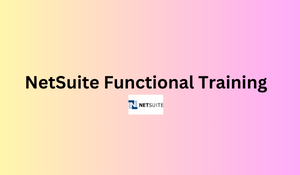What is Microsoft Azure?
Microsoft Azure is a cloud computing platform offering a variety of services, including virtual computing, storage, and networking resources, as well as specialized solutions for data analytics, AI, and more. It enables organizations to build, deploy, and manage applications and services through a global network of data centers, fostering scalability and flexibility.
How does Azure Resource Manager (ARM) help in managing resources in Azure?
Azure Resource Manager (ARM) simplifies resource management in Microsoft Azure by providing a unified platform to deploy, organize, and control resources. It enables template-based deployments, role-based access control, and consistent management of infrastructure, streamlining operations and enhancing scalability.
Explain the difference between Azure IaaS and PaaS.
Azure IaaS (Infrastructure as a Service) provides virtualized computing resources like VMs and storage, giving users more control over the infrastructure. PaaS (Platform as a Service) abstracts infrastructure details, focusing on application development, with Azure managing underlying resources, reducing maintenance overhead for users.
Can you compare Azure Virtual Machines (VMs) and Azure App Services?
Azure Virtual Machines (VMs) offer customizable, scalable infrastructure for running applications, requiring management. Azure App Services provide a fully managed platform for application deployment, abstracting infrastructure complexities, and enhancing developer productivity.
Describe the benefits and use cases of Azure Functions.
Azure Functions is a server less compute service in Microsoft Azure. Its benefits include automatic scaling, cost-effectiveness, and event-driven execution. Use cases range from microservices, data processing, and IoT applications to responding to events in real-time and executing code on-demand without infrastructure management.
Explain Azure Virtual Network and its components.
Azure Virtual Network is a networking service facilitating connectivity among Azure resources. Key components encompass subnets, virtual network gateways, and network security groups, ensuring secure communication and effective traffic routing within the Azure environment.
What is Azure Load Balancer, and how does it work?
Azure Load Balancer evenly distributes incoming network traffic across multiple servers, preventing overload on any single server. This promotes enhanced availability, fault tolerance, and scalability for applications hosted in Azure.
How does Azure manage data redundancy and availability in Azure Storage?
Azure Storage ensures data redundancy and availability by employing features like geo-replication. Through asynchronous replication to a secondary region, it guarantees durability, accessibility, and disaster recovery capabilities, enhancing the overall resilience of stored data.
How can you secure Azure resources using Azure Active Directory (AAD)?
Azure Active Directory (AAD) bolsters security by overseeing identity and access. It includes features like multi-factor authentication, conditional access policies, and single sign-on, ensuring the protection of Azure resources and fortifying overall security measures.
What are Azure Key Vault and Azure Security Center, and how do they enhance security?
Azure Key Vault is a secure key management service, safeguarding secrets and cryptographic keys. Azure Security Center provides advanced threat protection across Azure workloads. Together, they bolster security by managing keys and detecting and responding to security threats.
How do you monitor and troubleshoot resources in Azure?
Monitoring and troubleshooting in Azure involve using Azure Monitor to collect and analyze telemetry data, while tools like Azure Log Analytics and Azure Application Insights provide insights for effective troubleshooting.
Explain the importance of Azure Policies in resource governance.
Azure Policies enforce rules and standards for resource configurations in Microsoft Azure. They ensure compliance, manage risk, and maintain consistency, contributing to effective resource governance and alignment with organizational requirements.
What is Azure Resource Manager (ARM) templates?
Azure Resource Manager (ARM) templates, structured in JSON files, delineate the configuration and layout of Azure resources. They facilitate declarative infrastructure deployment, automation, and uniform resource management, guarantee consistency beyond operations within the Azure environment.
Explain Azure Logic Apps and their role in workflow automation.
Azure Logic Apps serve as cloud services dedicated to workflow automation. They play a vital role by allowing users to create automated processes that ordered connect diverse applications, services, and systems. This facilitates efficient data flow and integration, contributing to the streamlined and automated execution of complex business workflows within the Azure ecosystem.
What is Azure Service Bus, and how does it facilitate messaging between applications?
Azure Service Bus is a cloud messaging service that facilitates communication between applications, services, and devices. It uses message queues or topics to enable asynchronous and decoupled communication. This enhances scalability, reliability, and compatibility by allowing diverse components to exchange information without needing to be connected in real-time.
Describe the use cases for Azure API Management.
Azure API Management simplifies API creation, deployment, and management. Use cases include creating scalable APIs, enforcing security and access policies, monitoring API usage, and enabling developer collaboration, fostering efficient API lifecycle management in the cloud.
What is table storage in Windows Azure?
Table storage in Microsoft Azure is a NoSQL data repository designed for storing and retrieving considerable volumes of semi-structured data. contribution a cost-effective solution, it provides flexible and scalable cloud-based storage, catering to diverse applications such as IoT and web services.
What is the Windows Azure Platform?
The Windows Azure Platform, now Microsoft Azure, is a robust cloud computing platform. It provides a varied set of services, such as virtual machines, databases, and developer tools, empowering organizations to build, deploy, and manage applications globally. Azure’s extensive network of data centers ensures scalability, flexibility, and reliability in cloud-based computing solutions.
What are the roles available in Windows Azure?
In Windows Azure, various roles serve distinct purposes: Virtual Machines for computing, App Services for web and mobile app hosting, Databases for efficient data management, and Storage for scalable data solutions. These roles collectively empower organizations to deploy, manage, and scale applications effectively within the Azure cloud environment.










